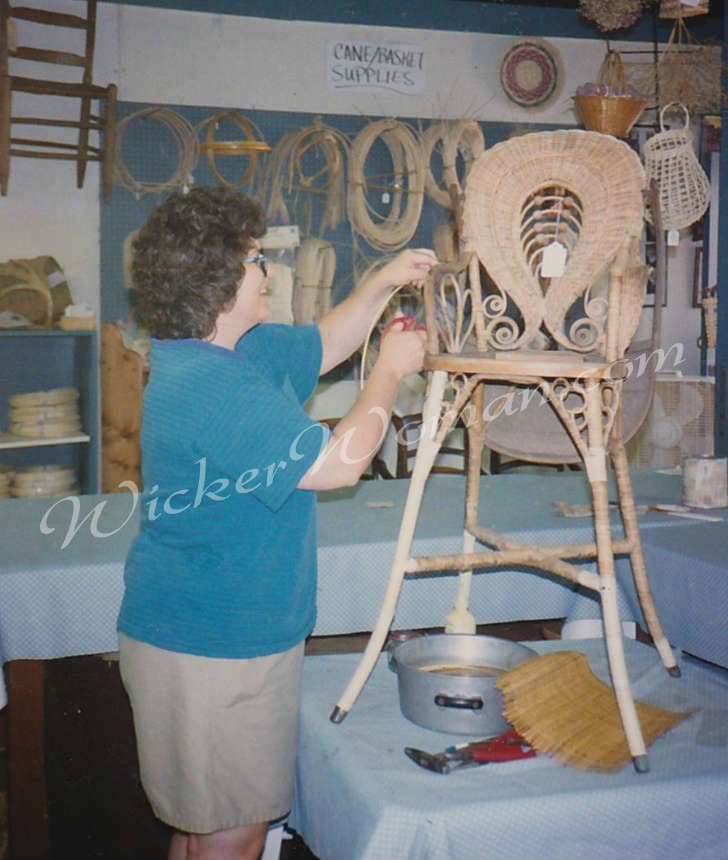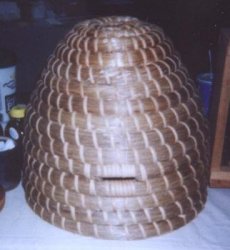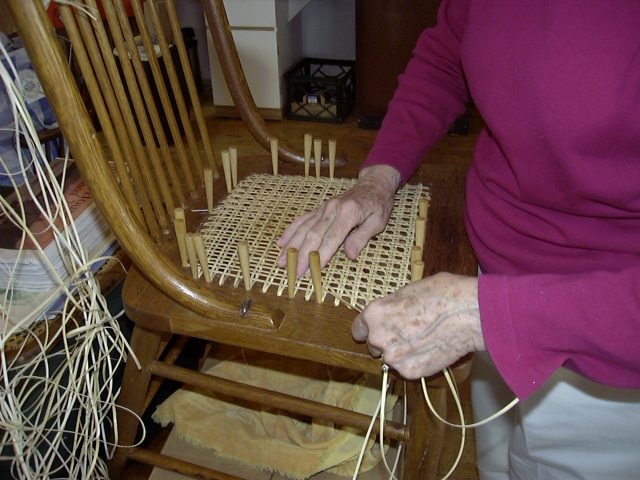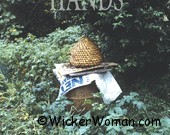I always have such a good time in the late summer, harvesting and processing oat and barley straw for weaving decorative bee skeps. Come along with me to see how I do it and get a little hint of how to weave coiled straw bee skeps.
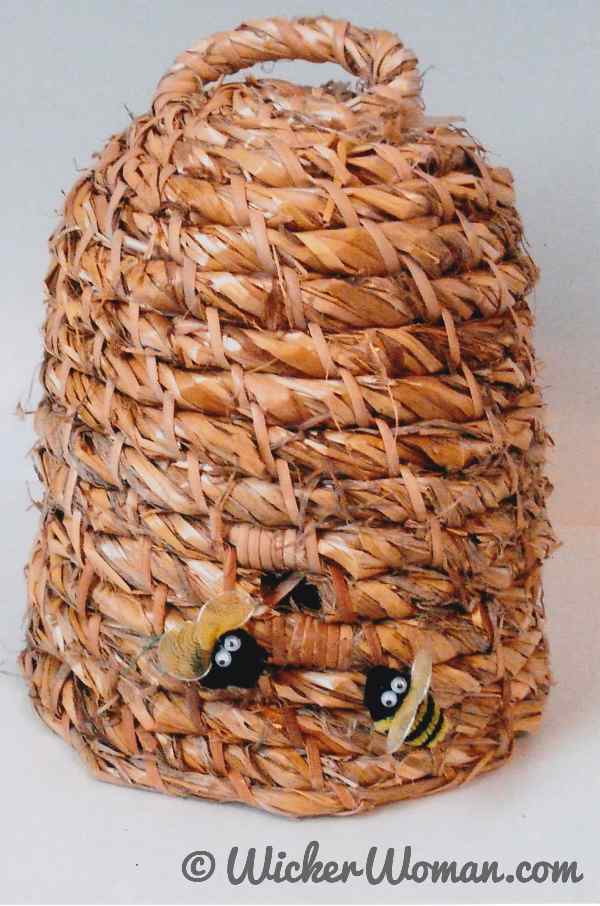
This article may contain affiliate links, which means that if you click on a link and then purchase an item, I may receive a commission at no cost to you. As an Amazon Associate, I earn from qualifying purchases.
What is a bee skep?
A bee skep is a traditional, domed, round, coiled beehive, typically made with straw or grasses, and looks somewhat like an upside-down basket.
The straw or grasses are twisted into a long coil that is woven or stitched using the coiled basketry technique.
The skeps are started in the center, and each coil round is stitched to the next round, using oak strips, willow bark, blackberry brambles, or chair cane.
The sides of the skep taper outward, with the wide opening at the bottom, and the small top (center beginning) often features a handle.
When to gather straw for your bee skeps?

I gather quite a bit during the late summer season. The shafts or stalks are as tall as they will get for the year, shortly before the farmer is ready to cut and combine all the grain. That way, I’m assured of having enough for weaving several skeps.
Any straw that is not used right away will keep for another year or more if kept bundled up and stays dry. Make sure you remove the seed heads so you don’t attract rodents.
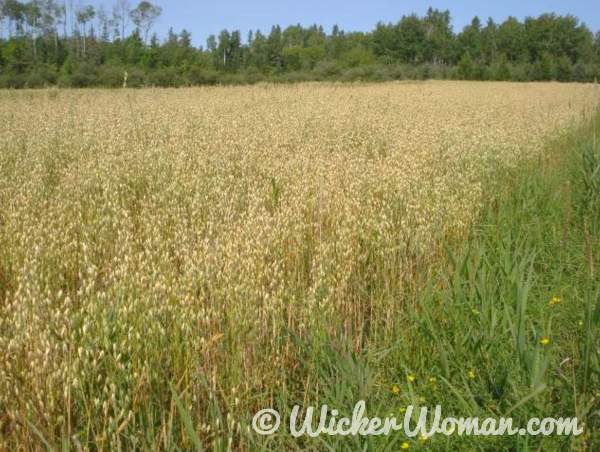
You want to wait to harvest until just a day or two before the farmer will be cutting it down. At that time, it’s almost totally dry and is as tall as it will get for the season. Ask the farmer if he would let you know when he’s likely to harvest.
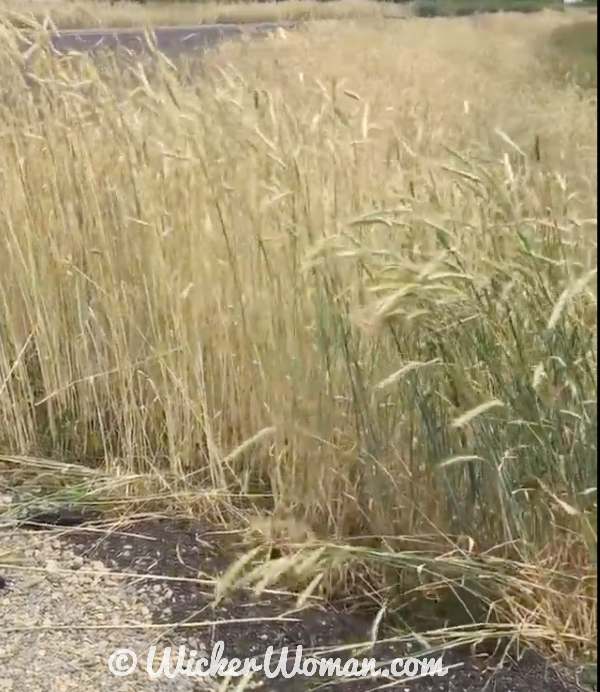
What is the best type of straw for bee skeps?
Just about any kind of straw will work for these decorative coiled bee skeps since they are not being used to actually house bees. As you can see in the above picture, highway construction is a good place to start looking for straw.
Rye straw is frequently planted along the roadside, steep ditches, or hillsides, to prevent soil erosion. So, keep your eyes peeled for this as you drive around in the countryside.
If you are weaving skeps for housing bees or even making a skep to capture a swarm, the best straw to use is rye straw. Rye straw has fewer leaves, is resistant to decay, and has a longer shaft than other types of straw.
Rye skeps are also touted as keeping the bees warmer in the winter and cooler in the summer.
Rye was also the type of straw that weavers used to make coiled “proofing” baskets for bread to rise in. The long strands of rye were easy to weave with, and also repelled mice as they didn’t like the taste of rye.
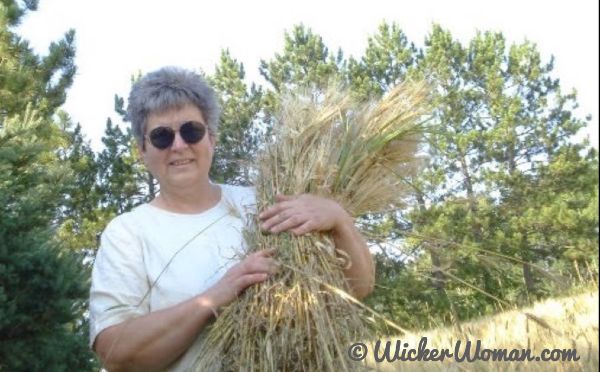
Prepare straw before weaving
If you were going to actually use them for keeping bees in, you would need to remove all the leaves and the top seed pod.
Either way, you do want to remove the seeds, since they will be attracting mice and other types of vermin if you don’t.
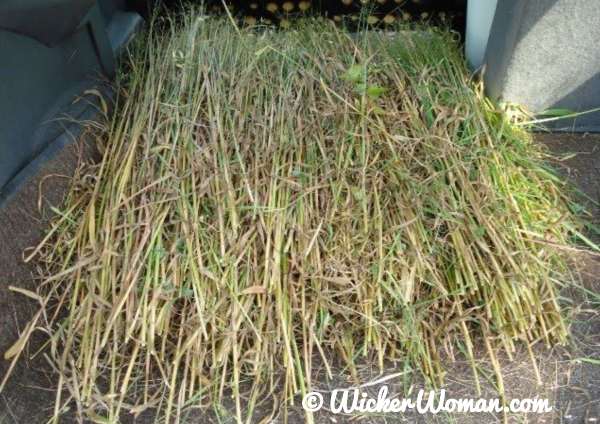
I removed most of the seed heads before putting the straw into my car, but waited until later to remove the leaves from the shafts.
Many times, I leave most of the leaves, giving the bee skeps a more rustic look, and besides, it’s less time-consuming than removing all of them.
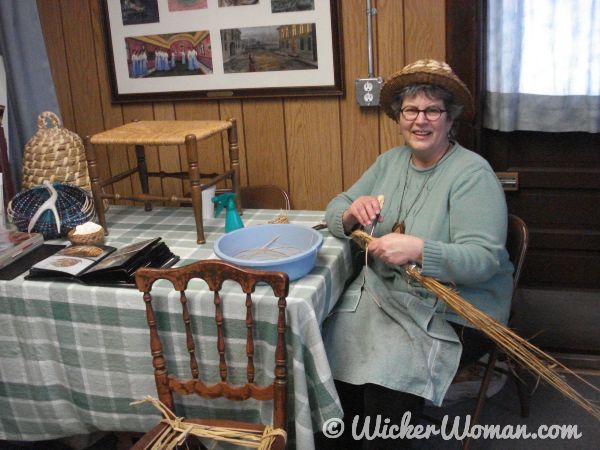
Weaving the coiled straw bee skep
I will eventually make the pattern available for sale on my website, and possibly along with a video to accompany it.
But for now, here’s a basic outline for making a straw bee skep:
- Assemble tools: scissors, small fid or basketry or scratch awl, water spritzer bottle, #4 binder cane for sewing coils together
- Dampen or mellow the straw so it’s flexible in a blanket or towel
- Make the center coil, using a bunch of straw, wrapping it a few times with the binder cane into a circle
- Attach each coil, with the cane, to the next, gradually making the circle wider until you get the desired diameter
- Keep adding straw to the coil girth as you now weave downward, attaching the coils
- Maintain the diameter so the skep is not lopsided until you get the desired height of your skep
- After the skep is done, cut a small hole for the bees to go into (only for decorative use inside the house)
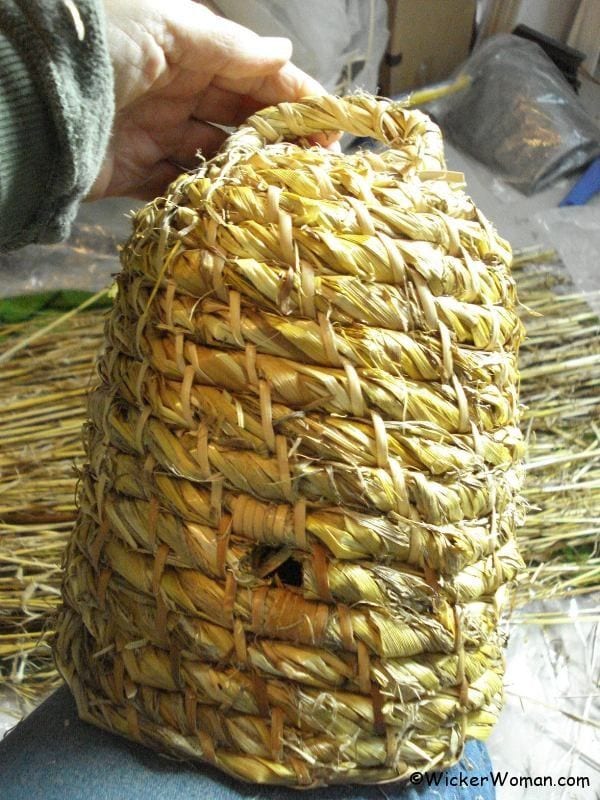
Final thoughts…
If you are using your decorative bee skeps inside, you can still cut an entrance hole for looks. But if you are going to use it outside, don’t cut an entrance hole for the bees. You want to discourage the bees from taking up house in these skeps since they are only for decoration, not function.
If you want to keep bees in hives, it’s best to use the Langstroth wooden box hives, where you can keep track of their health and remove the honeycombs easily. Neither of these is possible with a skep. However, using skeps to catch a swarming hive does come in handy.
I have taught bee skep making a few times and may teach again sometime in the future, but nothing is scheduled at this time. And will be selling the pattern on my site, sometime soon, too.
Have you ever made a rustic, straw, coiled bee skep? Are you interested in learning more about weaving them? Hit me up in the comment section below.

What are your thoughts about this blog post?
Leave your comments below and share with your social networks!
~~Live Well, Laugh Often, Love Much ~~
Happy Weaving, until next time!


